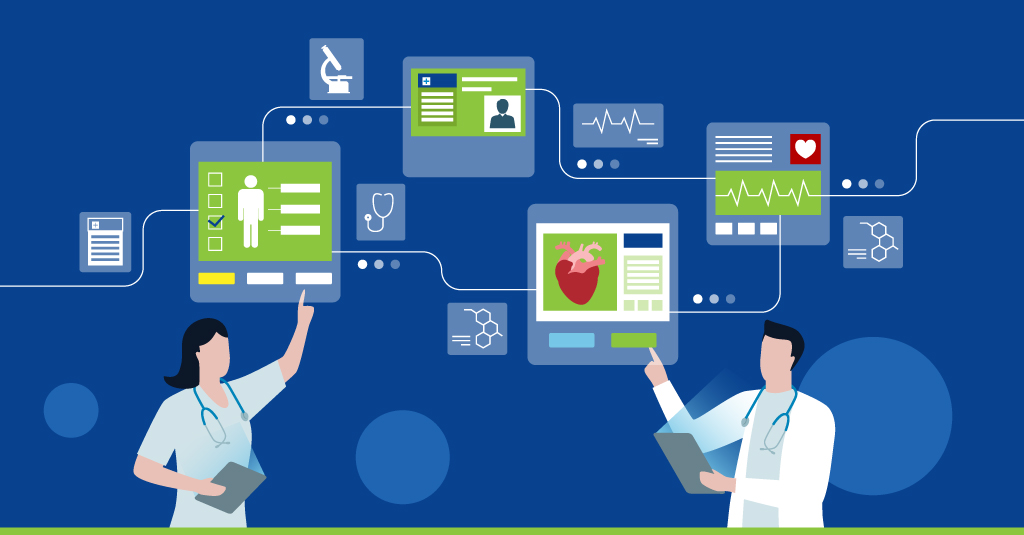
Compliance Is the Bedrock of Safety
Let’s be blunt. In healthcare, compliance failures don’t just cost money. They cost lives.
Every policy you see, from HIPAA privacy rules to infection control procedures, exists because somewhere, sometime, something went wrong. A breach. A medication error. A preventable death.
That’s why when we talk about eLearning in healthcare compliance, we’re not just talking about staff training. We’re talking about life support for the system itself.

Compliance Isn’t Just a Rulebook. It’s a Shield.
Think about what keeps patients safe. It’s not just sterile instruments or accurate prescriptions. It’s a workforce that knows the rules, remembers them under stress, and applies them consistently.
Healthcare compliance spans:
-
HIPAA: Protecting sensitive patient data
-
OSHA: Ensuring safe working conditions for staff
-
CMS Guidelines: Defining care quality and reimbursement standards
-
Joint Commission Standards: Governing hospital accreditation
When compliance slips, patient safety slips right along with it. And as researchers like Leape and Berwick have shown, system-level failures often stem from gaps in training and communication.

Why Old Models of Training Fail
I’ll never forget a story from a colleague at a mid-sized hospital. They ran annual, day-long compliance sessions. Everyone dreaded them. The staff would sit through hours of PowerPoints, checking their phones under the table. On paper, completion rates looked fine. But a few months later, a data breach occurred. Someone had shared patient information over an unsecured channel.
Did they know the rule? Technically, yes. Did they apply it? No.
This illustrates the central flaw of traditional compliance training:
-
Launch fast: Days, not weeks.
-
Little role-specific context
-
No reinforcement over time
-
Documentation without insight
And that’s exactly where eLearning shifts the paradigm.

How eLearning Improves Compliance and Patient Safety
Let’s break it down. eLearning helps not by making training digital, but by making it dynamic, adaptive, and scientifically sound.
1. Rapid Adaptation to Regulatory Change
During the pandemic, firms using eLearning systems updated and implemented training in a matter of hours as infection control policies changed overnight. Contrast that with legacy systems that needed weeks to organize in-person sessions.
2. Role-Based Relevance
Surgeons need different compliance pathways than billing specialists. eLearning platforms use adaptive logic to align learning with each role’s risk exposure. Relevance improves retention. Retention improves compliance.
3. Simulation of Real Scenarios
Instead of rote memorization, staff face branching scenarios: handling a sharps injury, disclosing an error, or protecting EHR access. Research shows scenario-based design (aligned with Merrill’s First Principles) significantly boosts transfer of learning into practice.
4. Spaced Reinforcement
If compliance knowledge is not used, it deteriorates. By revisiting important material at regular intervals, spaced repetition helps students improve their long-term memory. It’s not about passing a test once. It’s about getting it right in the ward at 3 a.m.
5. Transparent Audit Trails
eLearning systems capture who completed training, how they scored, and where they struggled. For regulators, that’s not just a report, it’s proof of a learning culture.

The Science Behind the Impact
This isn’t hype. It’s grounded in learning science and healthcare research:
-
Cognitive Load Theory: Breaking down complex guidelines prevents overload, which reduces error.
-
Dual Coding Theory: Combining text and visuals for safety procedures (like PPE donning) doubles retention.
-
Kirkpatrick’s Levels 3 & 4: Measuring not just completion, but whether behavior changed, and whether outcomes improved.
When these principles are embedded in compliance eLearning, training stops being a chore and starts being a patient safety intervention.

Case Insight: Medication Safety at Scale
One U.S. hospital network faced recurring issues with high-alert medications. After shifting to eLearning:
-
Modules simulated real prescription errors.
-
Microlearning refreshers reinforced correct dosage protocols.
-
Role-specific tracks were developed for nurses, pharmacists, and physicians.
Results after one year:
-
Medication errors dropped 29%
-
Staff-reported confidence rose significantly
-
Accreditation bodies praised the approach as a model of compliance learning
This wasn’t just education. It was risk reduction.

Pitfalls That Undermine Success
Even strong eLearning programs can stumble. Common pitfalls include:
-
Making modules too long, ignoring clinicians’ time pressures
-
Ignoring role-specific pathways, creating disengagement
-
Tracking completions instead of outcomes
-
Treating compliance as punishment rather than support
The takeaway? Compliance eLearning needs to be as urgently focused as it is well-designed.

Conclusion: Compliance as a Culture of Care
Ultimately, checklists have little to do with compliance. It’s about embedding safe behaviors into the DNA of healthcare organizations.
eLearning enables that. It equips staff to apply complex policies under stress. It documents learning for regulators. And most importantly, it safeguards patients, the true measure of success.
Because in healthcare, compliance is not the finish line. Patient safety is.

Partner With Upside Learning
If your organization is ready to move beyond generic compliance training and build eLearning programs that actually reduce risk and improve patient safety, Upside Learning can help.
We specialize in:
-
Role-specific compliance training that aligns with regulatory demands
-
Scenario-driven modules that turn policies into real-world practice
-
Continuous reinforcement strategies that strengthen retention over time
-
Measurable outcomes that satisfy both regulators and accreditation bodies
With over two decades of experience in healthcare and compliance learning, Upside Learning helps hospitals, clinics, and health systems create training that doesn’t just check boxes; it saves lives.
FAQs: Custom vs. Off-the-Shelf eLearning
If your workflows, tools, or brand vibe are one-of-a-kind- or if behavior change matters- custom’s your cheat code.
Yep, upfront it’s lighter on the wallet. But for long-term wins and role-specific skills? Custom flexes harder ROI.
For sure. Start with off-the-shelf for the basics, then sprinkle in custom modules where it really counts.
Depends on how ambitious you get- usually weeks to months. Planning ahead keeps you from sweating deadlines.
For general topics, yeah. For real-life scenarios or changing habits? Engagement can ghost you.
Totally. You own the content, so edits, tweaks, or upgrades? All yours.
Custom can adapt paths, toss in interactive exercises, and mix multimedia to match every brain type.
Mostly basic stuff- completion rates, quiz scores. Custom digs deeper: behavior, skill gaps, all the good analytics.
Quick wins? Off-the-shelf. Lasting change? Custom. Pick your lane- or flex both.
Yep. They make it seamless- fast deployment, tailored experiences, or a mashup.

Pick Smart, Train Better
Picking off-the-shelf or custom eLearning? Don’t stress. It’s really about your team, your goals, and the impact you want. Quick wins? Off-the-shelf has you covered. Role-specific skills or behavior change? Custom eLearning is your move.
Upside Learning makes both options effortless. Whether it’s ready-to-roll courses or fully tailored experiences, we handle the heavy lifting- interactive modules, adaptive paths, branded visuals, and analytics that tell you something. No wasted time, no generic content- just learning that sticks.
Ready to level up your team’s learning game? Connect with Upside Learning today and see how we make training fast, engaging, and results-driven. Your team deserves training that works- and we deliver.


















